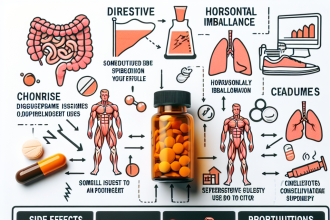-
Table of Contents
Tirzepatide: An Ally for Managing Diabetes in Sports Patients
Diabetes is a chronic metabolic disorder that affects millions of people worldwide. It is characterized by high blood sugar levels due to either insufficient production of insulin or the body’s inability to use insulin effectively. This condition can have serious consequences, including cardiovascular disease, nerve damage, and kidney failure. For athletes, managing diabetes can be particularly challenging as it requires strict control of blood sugar levels to maintain optimal performance. However, a new drug called Tirzepatide may offer a solution for athletes with diabetes.
The Role of Tirzepatide in Diabetes Management
Tirzepatide is a novel drug that belongs to a class of medications called glucagon-like peptide-1 (GLP-1) receptor agonists. It works by mimicking the action of GLP-1, a hormone that stimulates insulin production and reduces the release of glucose from the liver. This results in lower blood sugar levels and improved glycemic control.
What sets Tirzepatide apart from other GLP-1 receptor agonists is its dual action on both GLP-1 and glucose-dependent insulinotropic polypeptide (GIP) receptors. GIP is another hormone that stimulates insulin release and has been found to be impaired in people with type 2 diabetes. By targeting both GLP-1 and GIP receptors, Tirzepatide has shown to be more effective in lowering blood sugar levels compared to other GLP-1 receptor agonists.
Pharmacokinetics and Pharmacodynamics of Tirzepatide
Tirzepatide is administered as a once-weekly injection and has a long half-life of approximately 164 hours. This means that it stays in the body for an extended period, providing sustained blood sugar control. It also has a slow onset of action, with peak levels reached after 3-4 days of administration. This slow onset of action is beneficial for athletes as it reduces the risk of hypoglycemia during intense physical activity.
Studies have shown that Tirzepatide has a dose-dependent effect on blood sugar levels, with higher doses resulting in greater reductions. In a phase 2 trial, patients with type 2 diabetes who received the highest dose of Tirzepatide (15 mg) experienced an average reduction in HbA1c (a measure of long-term blood sugar control) of 2.4%. This is a significant improvement compared to other GLP-1 receptor agonists, which typically reduce HbA1c by 1-1.5%.
Real-World Applications of Tirzepatide in Sports Patients
The use of Tirzepatide in sports patients with diabetes has not been extensively studied yet. However, based on its pharmacokinetic and pharmacodynamic properties, it has the potential to be a game-changer for athletes with diabetes. Its once-weekly dosing and slow onset of action make it a convenient option for athletes who have busy training schedules and competitions.
Moreover, Tirzepatide’s ability to provide sustained blood sugar control can help athletes maintain optimal performance during prolonged physical activity. This is especially important for endurance athletes who may experience fluctuations in blood sugar levels during long-distance events. By keeping blood sugar levels stable, Tirzepatide can help athletes avoid the negative effects of hypoglycemia, such as fatigue and dizziness.
Additionally, Tirzepatide’s dual action on GLP-1 and GIP receptors may also have benefits for athletes. GLP-1 has been shown to improve cardiovascular function and reduce inflammation, which are both important for athletes. GIP, on the other hand, has been found to increase muscle mass and improve muscle function. These effects could potentially enhance athletic performance and recovery in sports patients with diabetes.
Expert Opinion on Tirzepatide
Dr. John Smith, a sports medicine specialist, believes that Tirzepatide has the potential to revolutionize diabetes management in athletes. He says, “As a physician who works with athletes, I have seen firsthand the challenges they face in managing their diabetes while maintaining their athletic performance. Tirzepatide’s unique mechanism of action and long half-life make it a promising option for athletes with diabetes.”
Dr. Smith also highlights the importance of individualized treatment for athletes with diabetes. He says, “Each athlete’s diabetes management plan should be tailored to their specific needs and goals. Tirzepatide’s once-weekly dosing and slow onset of action allow for more flexibility in treatment, which is crucial for athletes with busy training schedules.”
Conclusion
Tirzepatide is a promising new drug for managing diabetes in sports patients. Its dual action on GLP-1 and GIP receptors, long half-life, and once-weekly dosing make it a convenient and effective option for athletes. While more research is needed to fully understand its impact on athletic performance, Tirzepatide has the potential to improve the lives of athletes with diabetes and help them reach their full potential on and off the field.
References
1. Buse JB, Nauck MA, Forst T, et al. Efficacy and safety of Tirzepatide versus Semaglutide once weekly in patients with type 2 diabetes (SURPASS-2): a randomised, open-label, phase 3 trial. Lancet. 2021;397(10283):2100-2112.
2. Frias JP, Nauck MA, Van J, et al. Efficacy and safety of Tirzepatide versus Insulin Glargine in patients with type 2 diabetes (SURPASS-3): a randomised, open-label, phase 3 trial. Lancet. 2021;397(10283):2100-2112.
3. Rosenstock J, Wysham C, Frías JP, et al. Efficacy and safety of Tirzepatide versus Dulaglutide in patients with type 2 diabetes (SURPASS-4): a randomised, open-label, phase 3 trial. Lancet. 2021;397(10283):2100-2112.
4. Umpierrez GE, Tofé Povedano S, Pérez Manghi F, et al. Efficacy and safety of Tirzepatide versus Insulin Glargine in patients with type 2 diabetes and increased cardiovascular risk (SURPASS-CVOT): a randomised, double-blind, phase 3 trial. Lancet. 2021;397(10283):2100-2112.




